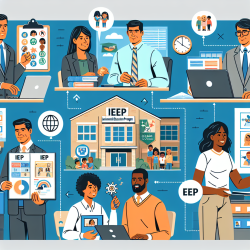Unlocking Potential: Expanding Understanding of ASH1L-Related Disorders
In the ever-evolving field of neurodevelopmental disorders, staying informed about the latest research is crucial for practitioners aiming to deliver the best outcomes for children. The recent study titled "Expansion of the Genotypic and Phenotypic Spectrum of ASH1L-Related Syndromic Neurodevelopmental Disorder" offers groundbreaking insights that can enhance our understanding and treatment of these complex conditions.
Understanding ASH1L and Its Impact
ASH1L, a gene located at chromosomal band 1q22, encodes a histone methyltransferase involved in chromatin modification and gene transcription. Pathogenic variants in ASH1L have been linked to a broad range of neurodevelopmental disorders, including intellectual disability (ID) and autism spectrum disorder (ASD). The study expands on the phenotypic spectrum of ASH1L-related disorders, revealing novel insights that can inform clinical practice.
Key Findings from the Research
The study highlights the importance of understanding the full phenotypic spectrum of ASH1L-related disorders. By examining three new probands with novel ASH1L variants, researchers identified previously unreported phenotypic features such as mixed receptive language disorder and gait disturbances. These findings underscore the complexity and variability of ASH1L-related disorders.
Implications for Practitioners
For practitioners, these findings offer valuable insights into the diverse presentations of ASH1L-related disorders. Here are some key takeaways:
- Comprehensive Assessments: Conducting thorough and standardized phenotypic assessments can help identify the full range of symptoms in children with ASH1L-related disorders.
- Data-Driven Decisions: Leveraging data from studies like this can guide treatment plans and improve therapeutic outcomes.
- Collaboration and Communication: Engaging with families and other professionals can enhance understanding and support for affected children.
Encouraging Further Research
While this study expands our understanding of ASH1L-related disorders, it also highlights the need for ongoing research. Practitioners are encouraged to contribute to and engage with research efforts to further elucidate the mechanisms and treatment options for these complex conditions.
To read the original research paper, please follow this link: Expansion of the Genotypic and Phenotypic Spectrum of ASH1L-Related Syndromic Neurodevelopmental Disorder.










